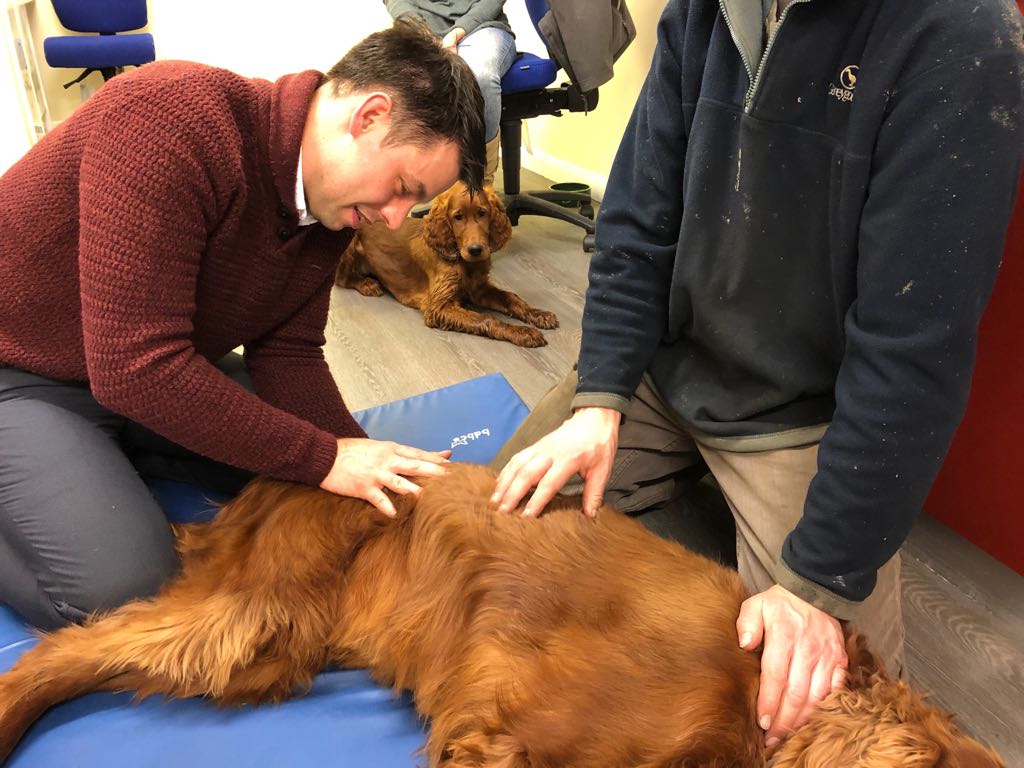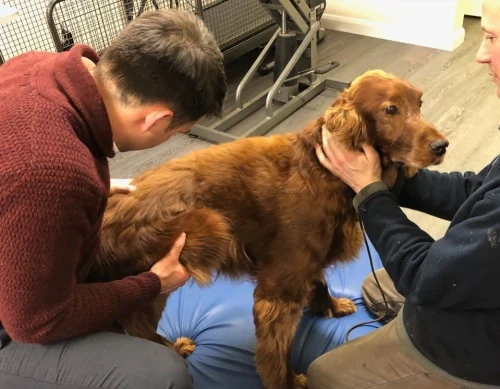Canine Osteopathy in Medway
We are huge animal lovers so it made complete sense to make Canine Osteopathy available at the clinic. Canine Osteoapthy works with the same principles as human Osteopathy, and is a system of assessing, diagnosing, treating and preventing a wide range of health problems for your dog.
Osteopaths look for the primary or underlying cause of the problem and treat most conditions affecting the musculo-skeletal system. The treatment intends to realign any imbalances, reduce tension, strain patterns and help to restore normal function so the dog can move pain free and to the best of their ability.

What to expect?
As with our human patients we allow and take our time to try to understand our canine patients. We do not just want to know their unique combination of symptoms, medical history and lifestyle but also understand their character and temperament. This not only helps to make an accurate diagnosis of their pain or lack of function but also gives the Osteopath an insight in how to best approach treatment with the dog. A dog that is given time to settle, before commencement of their assessment, is more likely to relax into treatment and have a positive experience as it allows them to feel safe and more confident about their practitioner.
During the initial consultation a lot of questions around their home environment, their patterns as well as their daily activities and habits will also be asked. Information about environment will include information about beds, car types, sofas and flooring, as all these may be having an effect on the dog’s problem.
The actual assessment will begin with an observation of the dog through gait cycles: walk, trot, canter (if possible). We may ask your permission to video this to allow for more an accurate assessment and give us a point to refer back to gage progress. Any video footage the owner has is always greatly welcomed as some problems may be intermittent and may not show up during the assessment.
There will then be general palpation through the dog’s entire body, looking for imbalance, tension, strain patterns and injury. Any neurological or orthopaedic examinations will then be carried out. At this point an osteopathic evaluation can be made.
Once they have been fully assessed the dog the Osteopath will fully explain their hypothesis and propose a management plan. They will answer any questions, and if indicated, advice on how much osteopathic treatment might be needed. To facilitate recovery, rehab exercises or activities will be recommended. They will also suggest any changes that might be helpful to the dog’s health, such as diet and exercise, including hydrotherapy.
Once the management plan has been agreed and the dog is comfortable, treatment then follows, with the intention of restoring optimal function so the dog can move to the best of their ability.
Occasionally, the dog may have to be referred back to the vet for further investigations before commencing with treatment. This is not a common occurrence and is only done with the dog’s safety in mind.
What does Canine Osteopathy help to treat?
Here is a list of when you may consider seeking treatment. This list is not exhaustive:
- Injuries from falls
- Difficulty with certain movements (getting up/down from beds/car/furniture/climbing stairs)
- Gait problems & an Inability to distribute weight evenly on all four limbs and not moving straight
- Carrying head low/neck stiffness.
- Reduced performance especially in agility and working dogs
- Changes in behaviour and unhappiness.
- An unusual reluctance to play
- Muscular spasms and stiffness
- Yelping after sudden movements or being picked up
- Lameness
- Rehabilitation and management of conditions such as hip dysplasia, arthritis, cruciate ligament damage, disc problems, post-surgery.
Veterinarian Surgeons working alongside our Osteopaths
Under current Veterinary Law only a Veterinary Surgeon can provide a diagnosis and treat a dog. A Veterinary surgeon however can refer cases to Osteopaths where appropriate. Our Osteopaths always work in conjunction with the dog’s veterinary surgeon and obtain consent from them before beginning treatment on a dog. To this end, prior to any treatment being undertaken, our Osteopaths will require written approval from the dog’s vet. This process can sometimes be frustrating for owners but it is there for the safety of the dog and also enables the Osteopath to talk to the vet about the case in advance of the treatment. This often provides them with invaluable information.
Who can treat me?
Senior Osteopaths


